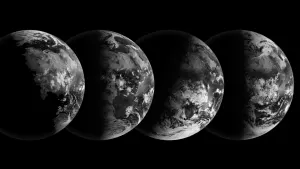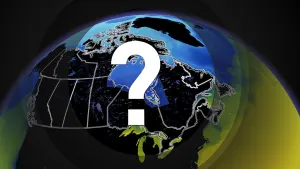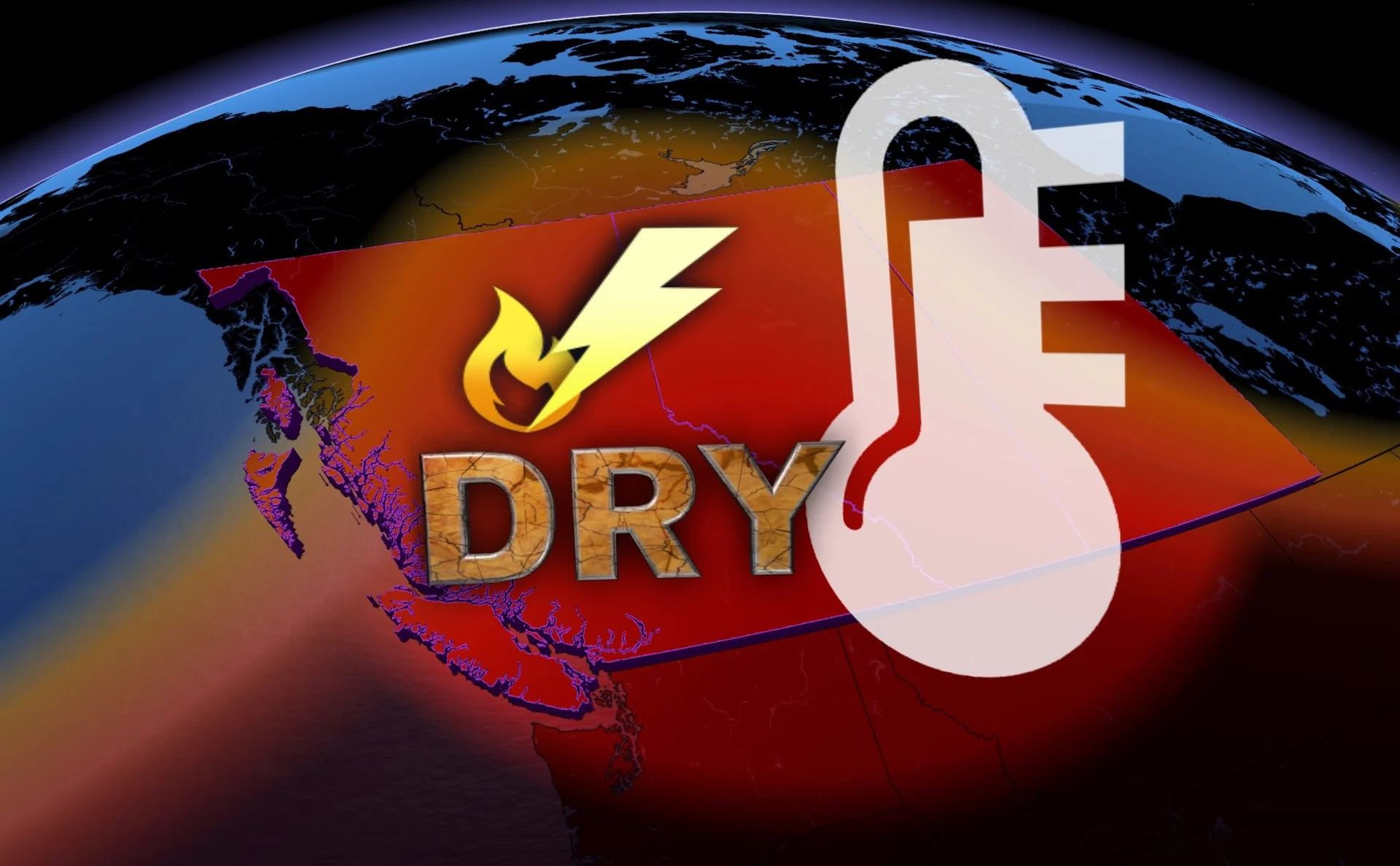
Wildfires grow in Western Canada but sees brief relief from extreme heat
Western Canada is experiencing a brief reprieve from the extreme heat but the relief will be minimal, with a continued concern over new wildfires sparking up
While the United States has been sweating under an intense heat dome, folks across Western Canada have also been feeling the sweltering heat. Being on the northern edge of "the ring of fire" has also meant, in addition to the temperature being on the rise, so has thunderstorm activity.
The rain from thunderstorms targeting the Prairie provinces this past week may have been welcome for the drier, fire-prone regions, one element of the storms is not welcome: lightning.
CANADA'S WILDFIRES: Visit The Weather Network's wildfire hub to keep up with the latest on the active wildfire season across Canada.
A widespread fire ban was implemented in Alberta on Wednesday, amid rising concerns over lightning sparking new fires over areas dried by the intense heat. Saskatchewan followed suit on Thursday, implementing a fire ban across the entire northern region of the province.

British Columbia also implemented a fire ban, as a provincewide campfire ban went into place on Friday.
Dry lightning is also a large concern with this heat, as it could ignite new fires without any rain to dampen the strike.
Unfavourable pattern sets up in B.C.
Temperatures in the West will remain above seasonal for the next four or five days before a return to the extreme heat later next week. Temperatures will jump to above 10°C above normal.
B.C.'s weather outlook for next week will be less than favourable, especially for the Interior. A ridge of high pressure will bring continued hot and sunny weather to the province, along with the occasional daytime thunderstorm.
Any daytime thunderstorms that form could also bring about gusting winds and the risk of dry lightning, furthering fears for wildfires to worsen and new ones to ignite.
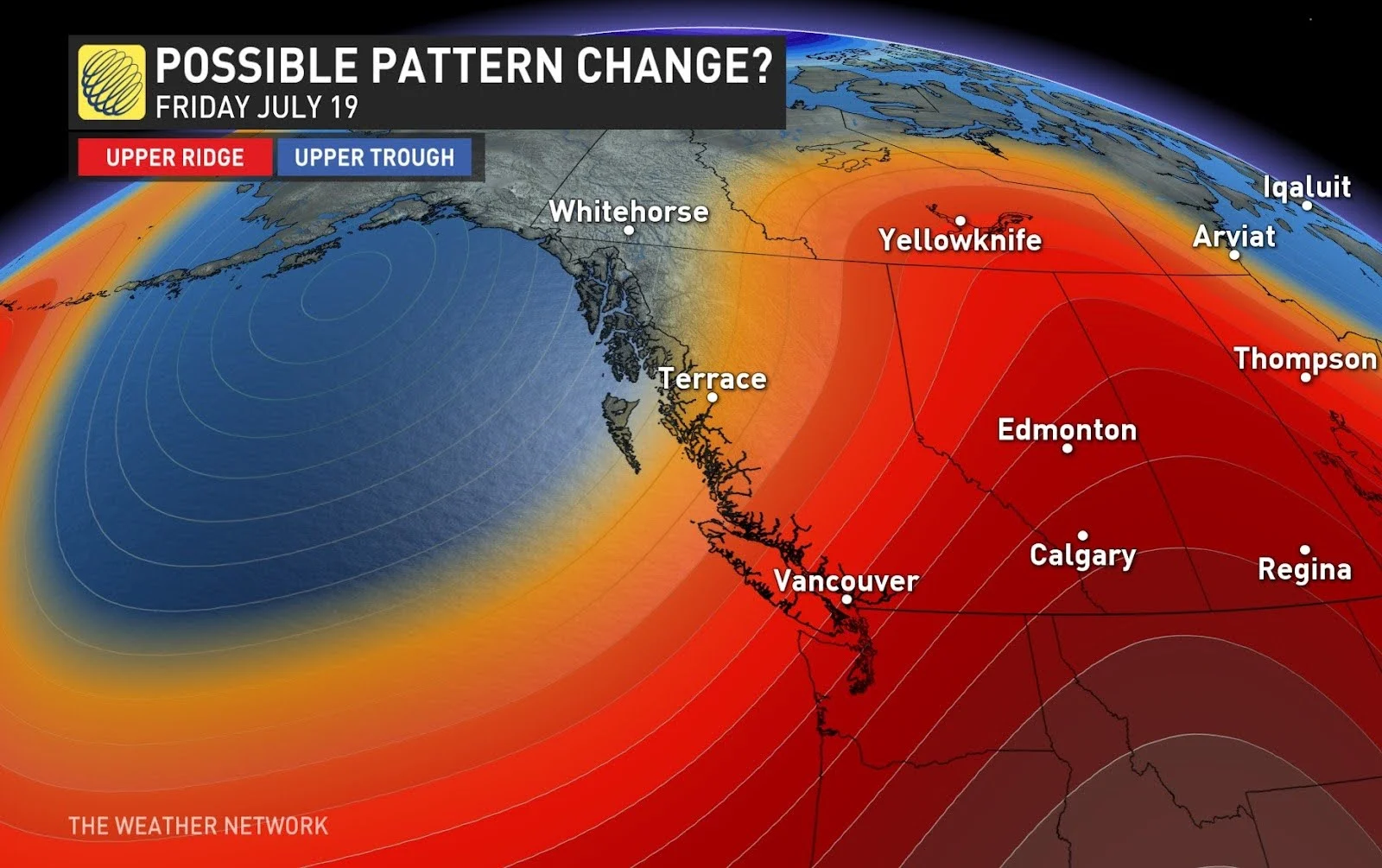
We could see a possible pattern change in the long range, which would finally bring some relief to the current fire danger.
Luckily, folks on the coast will have the Pacific Ocean on their side, providing some cool relief from the heat.
DON'T MISS: At least three earthquakes strike off the B.C. coast; no tsunami threat
As well, some weekend rain totalling 5-15 mm is expected for northern Alberta but it will likely miss the area where the largest fires are occurring.
WATCH: Sharp increase in wildfire activity as thermometer skyrockets
An active fire season
Western Canada's wildfire season has been off to a blazing start, with communities in northern Alberta and B.C. bearing the brunt of the battle.
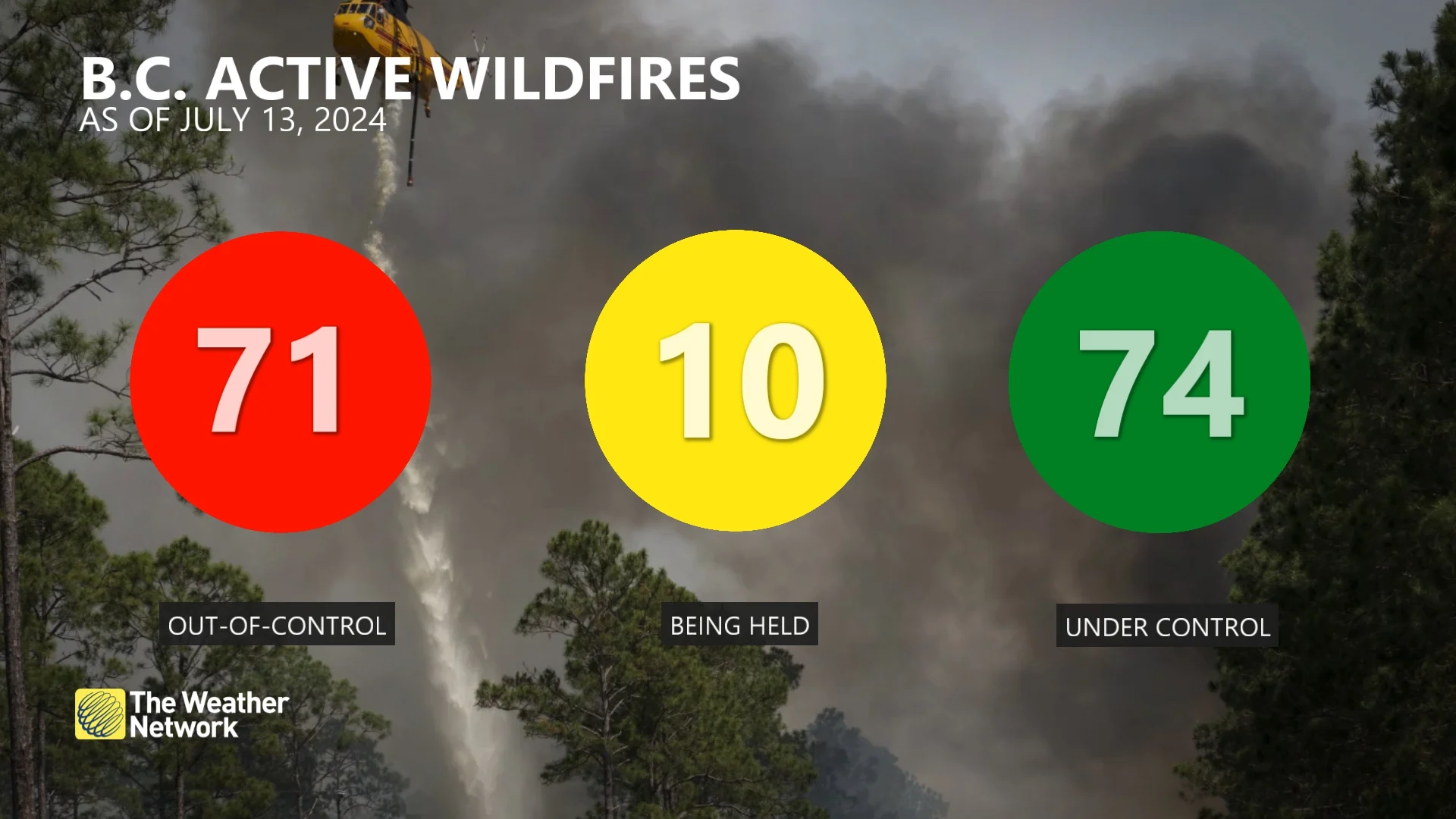
A low snowpack over the winter has significantly contributed to this year's wildfire season worries, especially after the historic 2023 season. In fact, many of the fires burning in these northern regions were actually fires from last year that are still burning.
Currently, there are 155 fires burning in B.C., 97 burning in Alberta, 81 burning in Saskatchewan, 94 burning in the Northwest Territories and 21 burning in Manitoba.
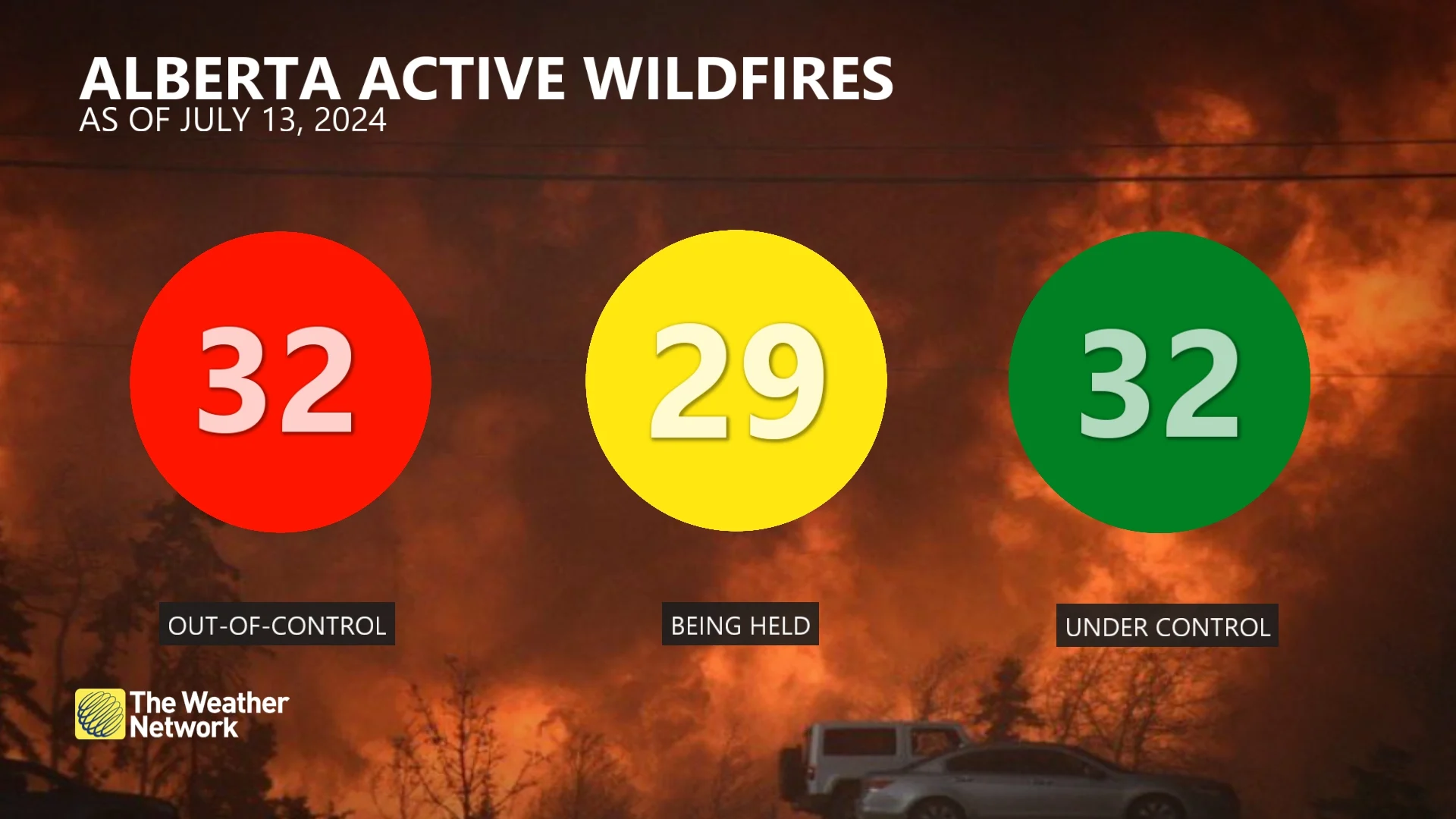
Stay with The Weather Network for more forecast information and updates on your weather across Western Canada.








